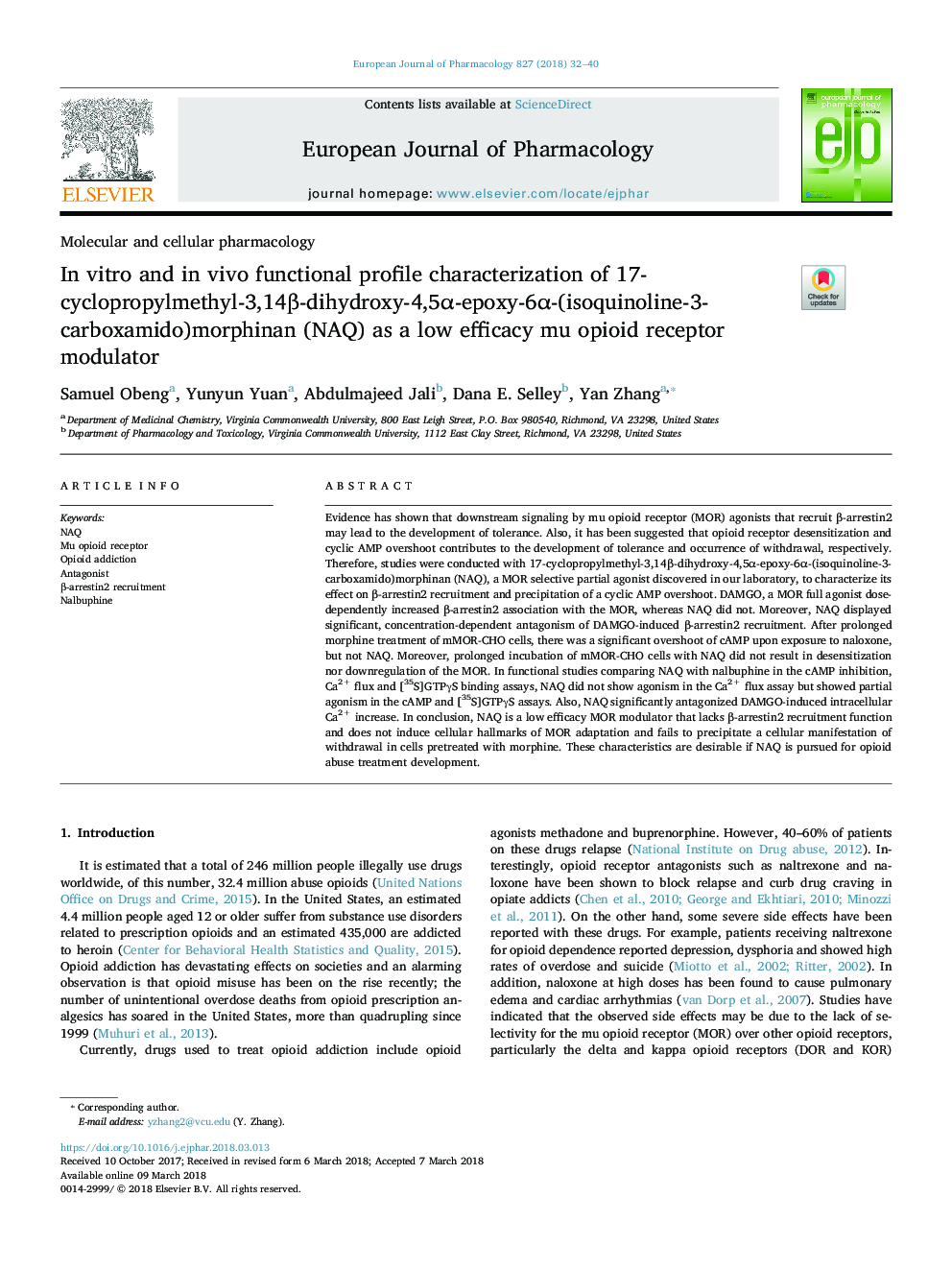| کد مقاله | کد نشریه | سال انتشار | مقاله انگلیسی | نسخه تمام متن |
|---|---|---|---|---|
| 8529122 | 1558853 | 2018 | 9 صفحه PDF | دانلود رایگان |
عنوان انگلیسی مقاله ISI
In vitro and in vivo functional profile characterization of 17-cyclopropylmethyl-3,14β-dihydroxy-4,5α-epoxy-6α-(isoquinoline-3-carboxamido)morphinan (NAQ) as a low efficacy mu opioid receptor modulator
دانلود مقاله + سفارش ترجمه
دانلود مقاله ISI انگلیسی
رایگان برای ایرانیان
کلمات کلیدی
موضوعات مرتبط
علوم زیستی و بیوفناوری
علم عصب شناسی
علوم اعصاب سلولی و مولکولی
پیش نمایش صفحه اول مقاله

چکیده انگلیسی
Evidence has shown that downstream signaling by mu opioid receptor (MOR) agonists that recruit β-arrestin2 may lead to the development of tolerance. Also, it has been suggested that opioid receptor desensitization and cyclic AMP overshoot contributes to the development of tolerance and occurrence of withdrawal, respectively. Therefore, studies were conducted with 17-cyclopropylmethyl-3,14β-dihydroxy-4,5α-epoxy-6α-(isoquinoline-3-carboxamido)morphinan (NAQ), a MOR selective partial agonist discovered in our laboratory, to characterize its effect on β-arrestin2 recruitment and precipitation of a cyclic AMP overshoot. DAMGO, a MOR full agonist dose-dependently increased β-arrestin2 association with the MOR, whereas NAQ did not. Moreover, NAQ displayed significant, concentration-dependent antagonism of DAMGO-induced β-arrestin2 recruitment. After prolonged morphine treatment of mMOR-CHO cells, there was a significant overshoot of cAMP upon exposure to naloxone, but not NAQ. Moreover, prolonged incubation of mMOR-CHO cells with NAQ did not result in desensitization nor downregulation of the MOR. In functional studies comparing NAQ with nalbuphine in the cAMP inhibition, Ca2+ flux and [35S]GTPγS binding assays, NAQ did not show agonism in the Ca2+ flux assay but showed partial agonism in the cAMP and [35S]GTPγS assays. Also, NAQ significantly antagonized DAMGO-induced intracellular Ca2+ increase. In conclusion, NAQ is a low efficacy MOR modulator that lacks β-arrestin2 recruitment function and does not induce cellular hallmarks of MOR adaptation and fails to precipitate a cellular manifestation of withdrawal in cells pretreated with morphine. These characteristics are desirable if NAQ is pursued for opioid abuse treatment development.
ناشر
Database: Elsevier - ScienceDirect (ساینس دایرکت)
Journal: European Journal of Pharmacology - Volume 827, 15 May 2018, Pages 32-40
Journal: European Journal of Pharmacology - Volume 827, 15 May 2018, Pages 32-40
نویسندگان
Samuel Obeng, Yunyun Yuan, Abdulmajeed Jali, Dana E. Selley, Yan Zhang,